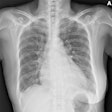Wednesday, December 1 | 9:30 a.m.-10:30 a.m. | SSIN06-5 | Room TBA
In this session, researchers from Cincinnati Children's Hospital Medical Center will discuss progress on a machine-learning algorithm to optimize radiologist scheduling for radiographs. Schedules are usually constructed so that a predetermined, fixed number of radiologists cover a service. But what if the daily study volume goes up or the potential radiologist capacity drops?As a means toward optimizing scheduling, researchers developed a model to predict study turnaround times (TAT = final report completion time) based on the scheduled complement of radiologists working in a large pediatric radiology fellowship program.
They included 397,806 radiographs in the data analysis. The team noted the model predicted an increase in the rolling seven-day mean TAT from June to September each year, which they suggest may have been due to the onboarding of new fellows. Ultimately, the model helped predict study volume with a high level of accuracy, yet prediction forecasts for shift turnaround times require further development, the team found.
Take in this session on Wednesday morning to learn more.




















